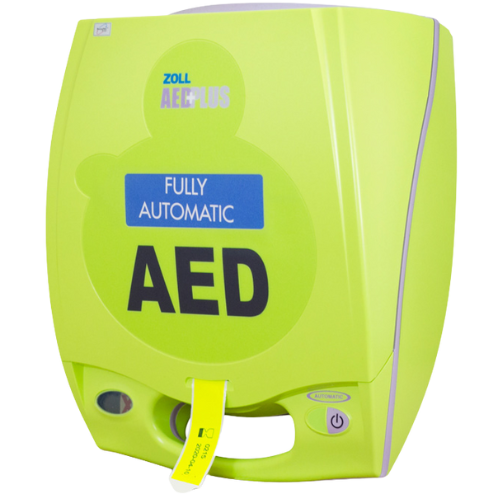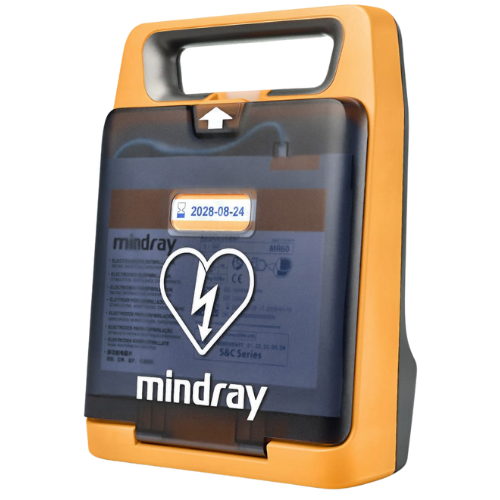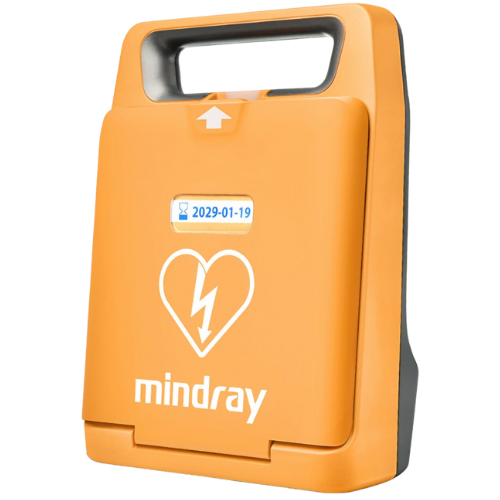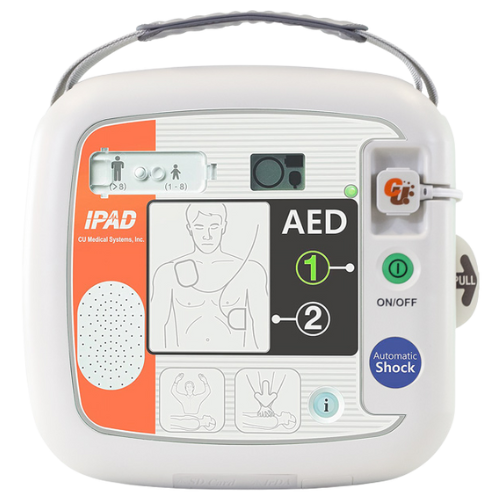The Cost of a Defibrillator vs the Cost of Doing Nothing
Every minute counts when someone suffers a sudden cardiac arrest (SCA). Access to a defibrillator, formally called an Automated External Defibrillator (AED), can be the deciding factor between life and death. Yet, for many workplaces, schools, and public venues, the decision to buy or rent an AED often comes down to cost.
Understanding the true cost of a defibrillator means looking beyond the purchase price. While a new AED may cost between £800 and £2,500, the cost of doing nothing, of not having one available when needed, can be far higher, both in human and financial terms.
Each year, more than 30,000 people in the UK suffer an out-of-hospital cardiac arrest. Fewer than one in ten survive. Immediate CPR and defibrillation can raise survival rates dramatically, but only if a working defibrillator is close at hand.
For organisations hesitant about upfront expenses, alternatives now exist. Rental schemes, such as Defib Space’s affordable AED rental, allow access to modern, fully serviced defibrillators from as little as £1 per day, ensuring compliance, safety, and peace of mind without the large initial cost.
This article compares the cost of owning an AED, the cost of renting, and the often-overlooked cost of doing nothing. It aims to help businesses and community groups make an informed, responsible decision.
Cost of Buying a Defibrillator (AED)
The upfront price of a defibrillator in the UK varies depending on its type, features, and intended setting. In general, most businesses or public venues can expect to spend between £800 and £2,500 for a complete installation.
Typical Purchase Prices
Entry-level AEDs (such as semi-automatic models) usually start around £800–£1,000. These are reliable and suitable for low-traffic environments.
Mid-range models with clearer voice prompts, paediatric modes, or connectivity features range from £1,200–£1,800.
Premium AEDs designed for high-use or outdoor settings can cost £2,000 or more, particularly when paired with weatherproof cabinets or monitoring systems.
Recent data from the All-Party Parliamentary Group for Defibrillators suggests that costs have risen by around 8–10% in recent years due to inflation and component shortages.
Additional Equipment and Setup Costs
When buying an AED, other expenses should be included in the total budget:
When combined, these items often bring the true initial outlay for an AED installation to around £1,200–£2,500.
Did You Know?
Even AEDs stored indoors can require cabinet heaters or temperature control if placed in unheated premises such as warehouses or garages. This adds to maintenance requirements and ongoing electricity use, often overlooked in initial cost planning.
Observation: In many workplaces, defibrillators are installed in remote corridors or storage areas. For best impact, placement should prioritise accessibility over discretion.
Ongoing & Lifetime Costs
Purchasing a defibrillator is not a one-off expense. AEDs require periodic replacement of consumables and regular checks to ensure reliability. Understanding these lifecycle costs is essential for accurate budgeting and long-term compliance.
Replacement Pads and Batteries
Electrode pads and batteries have expiry dates even if the AED is never used. Most manufacturers recommend replacement every 2–5 years, depending on the model.
For workplaces with multiple defibrillators, these replacement intervals can create recurring costs that need to be planned into annual budgets.
Maintenance and Servicing
AEDs conduct automatic self-tests, but visual inspections and periodic professional checks are still required. Many manufacturers and local councils recommend monthly visual checks to confirm readiness indicators and ensure pads and batteries are within expiry.
Professional servicing, while not mandatory, can cost £50–£100 per visit depending on the provider.
Training and Compliance
Although AEDs are designed for untrained users, basic CPR and defibrillator awareness training improves confidence and response speed. Training courses for staff generally cost £25–£50 per participant, with refresher sessions recommended every two years.
Environmental and Infrastructure Costs
Outdoor AEDs may need heated cabinets or alarm systems to ensure readiness in cold weather and deter tampering. These systems consume small but continuous electricity costs (around £20–£30 annually per cabinet).
Depreciation and Replacement
Manufacturers usually support each AED model for 8–10 years. After that, spare parts or software updates may become unavailable, leading to full replacement costs.
Over a 10-year lifespan, the total ownership cost of a single defibrillator (including purchase, pads, battery replacements, and maintenance) can exceed £2,500–£3,000.
The Cost of Doing Nothing / Under-Preparation
Not having a defibrillator on site may seem like a way to save money, but the real-world consequences, medical, legal, and financial, can be far greater. When sudden cardiac arrest (SCA) occurs, every minute without defibrillation reduces the chance of survival by 7–10%. After ten minutes, survival rates are extremely low.
Health and Survival Impact
According to the British Heart Foundation (BHF), over 30,000 people suffer out-of-hospital cardiac arrests each year in the UK. Currently, fewer than one in ten survive. Immediate CPR and early defibrillation can raise survival chances to over 70% in some cases when used promptly.
When a defibrillator is unavailable:
Emergency services may take 8–12 minutes to arrive, especially in rural areas.
Each minute without treatment increases the likelihood of irreversible brain injury.
Survivors who receive delayed shocks may require lifelong rehabilitation or assisted care.
These outcomes carry immense personal and societal costs, far beyond the financial expense of installing an AED.
Legal and Liability Risks
Organisations have a duty of care to employees, visitors, and the public. Failing to provide reasonable first-aid equipment, including AEDs, may expose an organisation to criticism or liability, especially if a preventable death occurs on site.
Public expectation has shifted, schools, gyms, offices, and community venues are increasingly expected to have defibrillators accessible. Following a cardiac arrest, reputational damage and legal scrutiny often follow if safety measures were lacking.
Economic and Social Costs
The aftermath of an untreated cardiac arrest can involve:
Lost productivity from preventable deaths or long-term disability
Increased healthcare and rehabilitation costs
Emotional and community impact on staff and bystanders
A 2017 UK Resuscitation Council analysis estimated that improving public access defibrillation could save thousands of lives annually and reduce long-term healthcare expenditure significantly.
Did You Know? Even when a public defibrillator was available within 500 metres, it was only used in about 10% of cases, largely due to lack of awareness or visibility (BHF, 2023). This highlights why accessibility and education matter as much as ownership.
Observation: In many workplaces, AEDs exist but are poorly signposted. Staff often do not know where they are or how to access them in an emergency, effectively nullifying their value.
The human and reputational cost of inaction far outweighs the moderate investment required to equip a premises with a reliable AED.
Renting or Leasing a Defibrillator, The Defibspace Option
For many organisations, the main barrier to installing a defibrillator is cost. Purchasing outright can require a substantial upfront investment, particularly for smaller businesses, community venues, or charities. Renting or leasing offers a practical alternative, ensuring life-saving readiness without the financial strain.
How AED Rental Works
Defib Space provides affordable automatic defibrillator rental for businesses, schools, and public spaces across the UK. From as little as £1 per day, organisations can access a fully equipped, regularly maintained AED package without worrying about hidden costs or upkeep.
Affordable Automatic Defibrillator Rental in the UK
Looking to rent a defibrillator? Defib Space is the UK’s trusted and leading provider of automatic defibrillators for rental, offering fully inclusive, cost-effective packages for businesses and public spaces. With sudden cardiac arrest being one of the leading causes of death worldwide, having quick access to a rented defibrillator can make the difference between life and death.Our automated external defibrillators (AEDs) are easy to use, reliable, and designed for emergency situations where every second counts. No training is needed, our rental defibrillators come ready to use, providing clear voice prompts and automatic shock delivery to help save lives fast.
Benefits of Renting
Low Upfront Cost
No large capital purchase is required. Monthly or annual rental spreads the expense evenly over time.All-Inclusive Maintenance
Pads, batteries, software updates, and replacement parts are included in the rental fee, removing uncertainty about future expenses.Compliance and Readiness
Each device is professionally maintained to remain in date and fully operational, ensuring compliance with workplace safety requirements.Flexibility
Ideal for temporary or seasonal sites, rented AEDs can be upgraded or returned as needs change.Support and Replacement Guarantee
Faulty devices are replaced quickly at no extra charge, minimising downtime and administrative burden.
When Rental Makes Sense
Small and medium enterprises that want safety compliance without a large one-time cost
Community groups managing limited budgets or short-term projects
Schools, gyms, and venues with seasonal usage patterns
Organisations upgrading older AEDs without new capital expenditure
Over a typical 10-year span, renting at around £1 per day equates to roughly £3,650, which is comparable to (and often less than) the total ownership cost once pads, batteries, servicing, and replacements are included.
Renting transforms AED ownership from a capital expense into a predictable operating cost, removing the financial uncertainty that often delays lifesaving action.
Risk Mitigation, Best Practice & Decision Factors
Equipping a workplace or community space with a defibrillator is not only about compliance, it’s about preparedness. The right planning, maintenance, and accessibility can transform a simple piece of equipment into a genuine lifesaving asset.
Key Decision Factors When Choosing an AED
Environment and Accessibility
Consider where the AED will be located. Indoor areas with steady temperatures can house most models, but outdoor installations require heated, weatherproof cabinets to protect against moisture and cold.User Experience
Look for AEDs with clear voice and visual prompts. Fully automatic models (which deliver the shock without user intervention) reduce hesitation during emergencies.Maintenance Requirements
Some AEDs require more frequent pad or battery changes. When comparing models or rental options, check the intervals for consumables and whether replacements are included.Connectivity and Alerts
Newer AEDs offer self-monitoring functions and online readiness reports, useful for larger organisations managing multiple sites.Budget and Cash Flow
If capital budgets are limited, renting through Defib Space’s all-inclusive plan offers immediate readiness without upfront expense.Training and Awareness
Even though AEDs are designed for untrained users, basic CPR awareness increases response speed and confidence. Regular training or drills are strongly recommended.
Risk Mitigation Through Accessibility
Visibility: Position AEDs in central, signed areas. A hidden AED is as ineffective as having none.
Registration: Register your AED with the National Defibrillator Network (The Circuit), run by the BHF, to make it visible to 999 call handlers.
Maintenance Records: Keep a simple log of checks, this protects against liability and ensures compliance with health and safety expectations.
Multiple Locations: Larger sites may need more than one AED, especially where travel time across the premises exceeds two minutes.
Did You Know? The Health and Safety Executive (HSE) does not currently mandate AEDs in workplaces, but under the Health and Safety (First-Aid) Regulations 1981, employers must ensure adequate first-aid provision, which may include a defibrillator based on risk assessment.
Observation:
In many workplaces, AEDs are installed but not integrated into safety drills. Including defibrillator awareness in fire or first-aid exercises ensures that staff know where the AED is and how to retrieve it quickly, the most practical form of risk reduction.
Proactive planning, visible placement, and staff confidence are the best safeguards against the devastating cost of unpreparedness.
Wrapping it Up
When comparing the cost of a defibrillator with the cost of doing nothing, the evidence is clear. The financial outlay for an Automated External Defibrillator (AED), whether purchased or rented, is modest compared to the human, reputational, and economic cost of inaction.
A single defibrillator, properly maintained and accessible, can transform survival outcomes for cardiac arrest victims. Each minute without defibrillation reduces survival by up to 10%, yet a prompt shock can raise chances to over 70%. For workplaces and community sites, this is not just a medical fact, it’s a measure of responsibility.
Buying an AED offers ownership and long-term control, but comes with ongoing maintenance and consumable costs.
Renting, as offered by Defib Space, removes these burdens entirely, for around £1 per day, organisations gain continuous access to a maintained, compliant AED ready for immediate use.
Affordable Automatic Defibrillator Rental in the UK
Defib Space provides fully inclusive, cost-effective defibrillator rental packages for businesses and public spaces. Each rental AED is supplied ready to use, with automatic shock delivery, voice prompts, and all maintenance included. No hidden costs, no training required, just reliable, accessible safety when it matters most.
Ultimately, the cost of readiness is measurable and affordable. The cost of doing nothing is neither.
In summary:
Buying a defibrillator typically costs £1,000–£2,500.
Renting costs about £1 per day, all-inclusive.
Doing nothing could cost a life.
Taking the first step, whether purchasing or renting, ensures your organisation is prepared, compliant, and capable of responding effectively when every second counts.
FAQs
Here are some frequently asked questions and answers about defibrillator ownership, rental, and preparedness.
Q1: What happens if the defibrillator is used during an emergency?
If the AED is deployed, most rental providers (including Defib Space) replace the electrodes, battery and restore the device to “ready” status at no extra cost.
Q2: Is training required to use an AED?
No formal medical training is required. AEDs are designed with voice prompts, visual instructions, and automatic decision logic. However, basic CPR/defibrillator familiarisation training boosts confidence and speeds response.
Q3: Can I rent an AED for only a short period (e.g. for an event)?
Yes. Rental agreements are often flexible, from a single day to longer-term contracts. Defib Space supports both temporary and long-duration rentals.
Q4: Are consumables (pads, batteries) included in the rental cost?
Yes, full rental packages typically include all consumables, replacements, servicing, and maintenance.
Q5: How much does rental cost?
Defib Space advertises rental from £1 per day for a fully inclusive AED package.
Q6: When might buying an AED make more sense than renting?
If you expect to use the AED long-term in a single location, the cumulative cost of renting may exceed purchasing plus maintenance
If you have the capital and want full ownership control
For large organisations that already manage maintenance in-house
Q7: Do I need to register my AED with a national network?
Yes. It’s strongly advised to register AEDs with national registries like The Circuit / National Defibrillator Network so emergency services and 999 operators can direct bystanders to the nearest device.
(This is separate from rental or ownership.)
Q8: What legal or regulatory obligations apply?
In the UK, the Health and Safety (First Aid) Regulations 1981 require employers to provide adequate first-aid equipment.
While there is no specific legal mandate requiring AEDs, failing to assess the risk or provide reasonable provisions may expose organisations to liability.
Regular inspection, maintenance, and records help demonstrate diligence.
Q9: Can rental AEDs be upgraded or replaced mid-contract?
Yes. Many rental plans allow swift replacement if the device fails or is deployed, and may offer upgrades over time. Defib Space’s rental service includes fast swap for faulty units.
Sources
Below are the live sources used in this article, along with what each contributed:
Defib Store – Rent a Defibrillator
Example competitor rental model, showing daily rates and inclusions.
https://www.defibstore.co.uk/services-rent-a-defibrillatorDefib 4 Life – Flexible Defibrillator Rental Solutions
Demonstrates flexible rental model from ~£0.99/day and long-term support.
https://defib4life.co.uk/pages/defib4life-flexible-defibrillator-rental-solutionsDefib Service – AED Rental from £1/day
Example of a rental provider with full service, replacement, and maintenance included.
https://defib-service.co.uk/product/defib-rental/Pulse4all – Renting vs Subscription
Comparative view on alternative models including rental or subscription of defibrillators.
https://pulse4all.co.uk/renting-defibrillator-vs-defibrillator-subscription/








